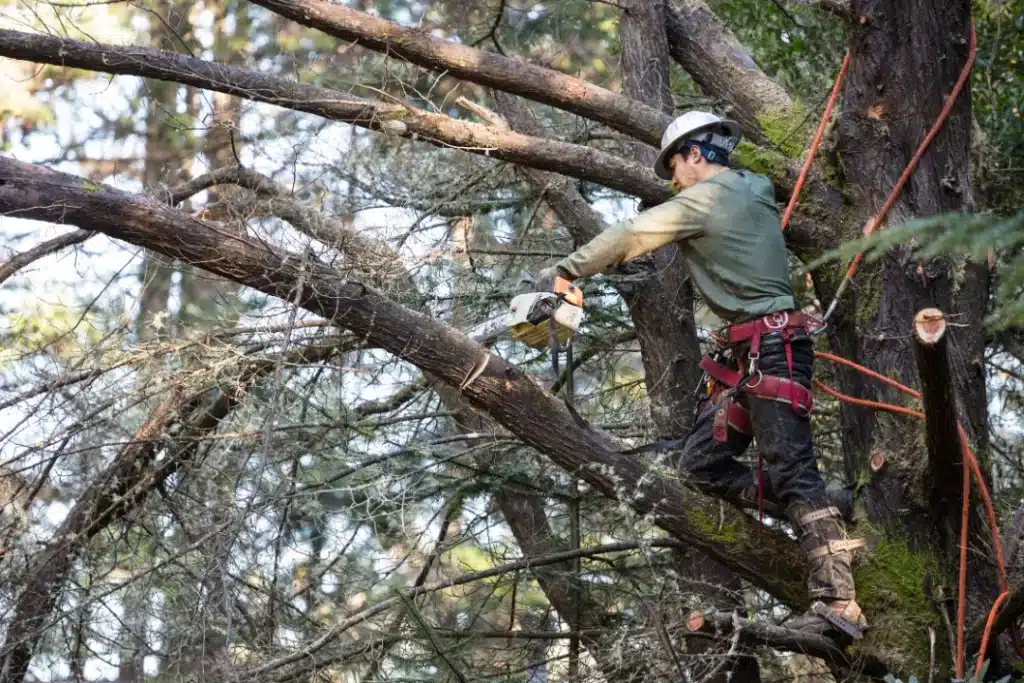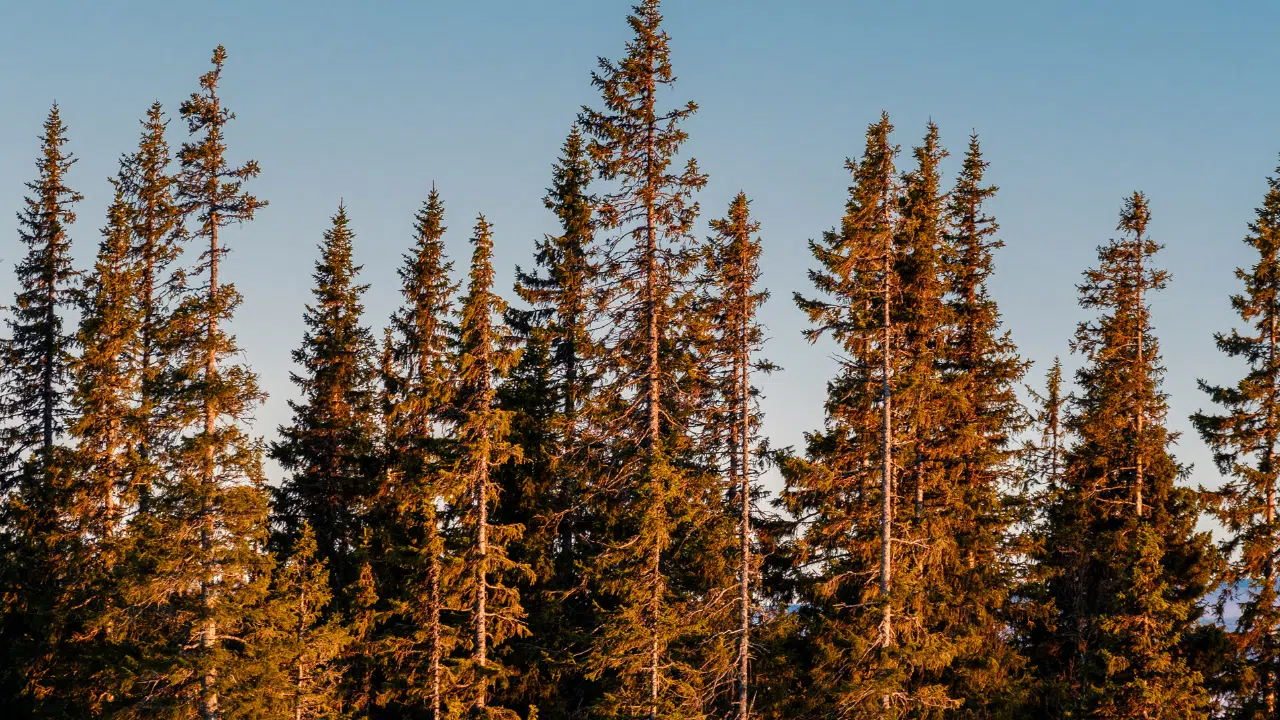Montgomery’s tree aficionados are drawn to larch trees for their mystery and beauty. Understanding where these majestic trees grow is critical to recognizing their ecological value. In this detailed book, we will delve into the where do they grow, including their favored habitats, distinguishing traits, and environmental value.
Join us on a quest to explore the mysteries of these trees growth and why tree removal specialists adore them.
Where Do Larch Trees Grow?
Understanding Larch Trees
This belong to the genus Larix, are notable for being deciduous, shedding their needles in the fall. These coniferous trees are known for their remarkable look, which includes delicate, needle-like leaves and peculiar cones. They thrive in temperate temperatures and are often found in settings with damp, well-drained soil, such as mountains and boreal woods.
These are essential components of forest ecosystems, providing habitat and food for a variety of wildlife species. They also provide several benefits to humans, such as lumber production, erosion management, and aesthetic value in landscaping. Despite their endurance, these trees are at risk from pests, diseases, and habitat loss. Understanding their biology and ecological importance is critical for successful conservation efforts and sustainable management approaches.
In this section, we will look more closely at the anatomy, habitat, and ecological relevance, offering light on their place in nature.
Exploring Larch Tree Habitats
Larch trees thrive in a wide range of settings throughout the Northern Hemisphere, adjusting to changing environmental conditions. These hardy trees are frequently found in temperate and boreal forests, where they perform an important ecological function.
Larch trees thrive in highland forests, which have moderate temperatures and enough rainfall. In these conditions, larch trees frequently coexist with other coniferous species such as spruce and fir, adding to the forest ecosystem’s great biodiversity.
Larch trees thrive in wetland settings like bogs and marshes, demonstrating amazing adaptation to waterlogged soils. Their ability to survive saturated conditions makes them crucial components of these distinct ecosystems, providing a home for wetland species and supporting the soil through their massive root systems.
Furthermore, larch trees thrive in mountainous areas with difficult climates, where they can withstand freezing temperatures and high winds. Their ability to tolerate harsh weather circumstances makes them essential components of alpine ecosystems, helping to boost the resilience and biodiversity of these high-altitude settings.
Planting Larch Trees: Proper Method with Tools
To promote the good establishment and growth of larch, site selection, preparation, and planting practices must all be carefully considered. Here’s a step-by-step guide to planting these majestic trees using the appropriate method and tools:
Choose a location with well-drained soil and ample sunlight. Avoid places with a high risk of flooding or excessive shadow.
Clear the planting area of any weeds, rocks, or debris. To increase aeration and drainage, loosen the soil to a depth of at least 12 inches with a shovel or gardening fork.
With a shovel, dig a hole twice as wide and as deep as the tree’s root ball. The hole should be big enough to hold the roots without bending or crowding. To improve soil fertility and structure, mix organic materials, such as compost or aged manure, into the backfilled soil.
Position the larch in the center of the hole, making sure that the top of the root ball is level with the surrounding soil surface. Fill the hole with the adjusted soil mixture, gently firming it around the roots to remove air pockets.
Watering the newly planted tree thoroughly helps to settle the soil and give it moisture for root establishment. Apply a layer of mulch around the tree’s base to preserve moisture, control weeds, and regulate soil temperature. Use stakes and ties to support the tree if it is vulnerable to wind damage or instability.
Keep an eye out for symptoms of stress on the tree, water it as needed, and provide continuing care and maintenance to encourage healthy growth. Following these methods and utilizing the proper tools, such as a shovel, garden fork, and watering can, will ensure the successful planting and establishment of larch trees in your landscape.
Caring for Larch Trees
Caring for larch trees is critical to ensuring their health, vigor, and longevity. Here are some important guidelines for proper larch tree care:
Larch trees require frequent irrigation, particularly during dry spells. Ensure that the soil is regularly moist but not soggy. Deep, infrequent watering is better than regular, or shallow irrigation.
Apply a layer of organic mulch around the tree’s base to preserve moisture, discourage weeds, and regulate soil temperature. To prevent rot, keep the mulch a few inches away from the tree trunk.
Pruning larch trees during the dormant season involves removing dead, diseased, or crossing branches. This improves air circulation and keeps the tree’s shape and structure.
They do not require regular fertilization. If the soil is poor or weak in nutrients, use a balanced fertilizer in the spring.
Keep an eye out for larch tree pests, including aphids, sawflies, and bark beetles, as well as diseases like needle cast or rust. Infestations should be treated as soon as possible with appropriate insecticides or fungicides.
In colder climates, protect young trees from frost damage by wrapping the trunk with burlap or providing a windbreak.
Following these care suggestions will ensure that your larch remain healthy and thrive in your environment for many years.
FAQs
What is the advantage of planting larch trees?
Larch trees provide several benefits, such as erosion management, wildlife habitat, and lumber production.
How quickly does a larch tree grow?
Larch trees are recognized for their quick growth, reaching heights of 30 meters within 30 years.
Are larch trees vulnerable to disease?
Larch trees, while generally sturdy, are susceptible to diseases such as Phytophthora root rot and needle cast.
Can larch trees grow in urban areas?
Yes, larch trees may flourish in urban environments if given sufficient care and enough space to grow.
When is the optimum season to plant larch trees?
The optimal time to grow larch trees is during their dormant season, which occurs in late autumn or early spring.
Do larch trees lose needles in the winter?
Yes, larch trees are deciduous conifers, shedding their needles in winter.
Conclusion
Finally, understanding where larch trees grow and how to care for them is critical for preserving healthy and vibrant landscapes. Larch, with their distinctive beauty and durability, can thrive in a variety of settings and climates, making them valuable complements to gardens, parks, and forests alike.
Individuals can enjoy the various benefits that these trees provide by exploring their habitats, learning about their growth requirements, and using proper planting and care procedures. Whether you’re a homeowner, landscaper, or forestry enthusiast, adding larch trees to your landscape can help to increase biodiversity, improve air quality, and provide aesthetic value.
Caring for these trees also ensures their lifetime and adds to ecosystem health. By following the advice in this article, including proper planting methods, watering tactics, and pest management strategies, you can grow robust larch trees that benefit the environment and provide delight to those who see them.





